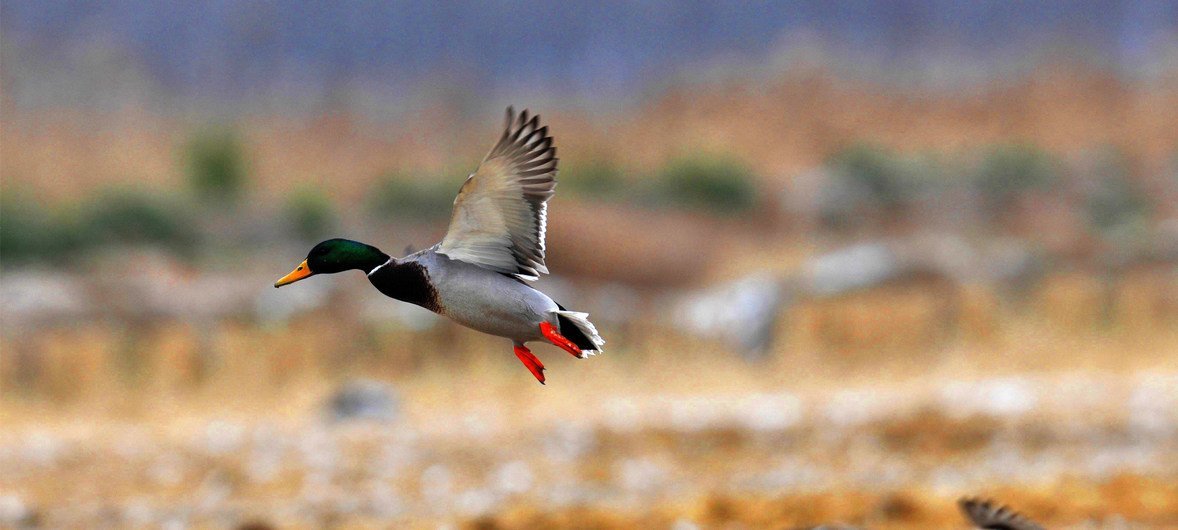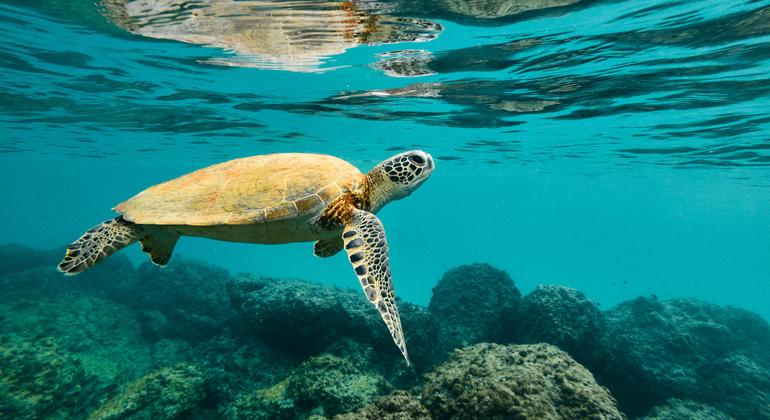Of most concern is the threat to migratory fishes, with 97 per cent of the species on the brink of extinction.
The two greatest threats to all migratory species are overexploitation and habitat loss due to human activity, according to the first-ever State of the World’s Migratory Species report, released on Monday.
Amy Fraenkel, head of the Convention on the Conservation of Migratory Species of Wild Animals (CMS) secretariat, highlighted the importance of specific habitats.
“They regularly travel, sometimes thousands of miles, to reach these places. They face enormous challenges and threats along the way, as well at their destinations where they breed or feed,” she said.
The study – the first of its kind – was prepared by conservation scientists at the UN Environment Programme (UNEP) for the CMS, as its State parties gathered for a major conference in Samarkand, Uzbekistan.
Climate change impact
The report also emphasized the impact of climate change, not only as a direct threat, but also an “amplifier” of other threats, such as pollution and invasive species.
The impacts of climate change on biodiversity are expected to rise considerably in the coming decades, the report noted, explaining that changing temperatures can cause migratory species to arrive too early, too late or not at all.
Furthermore, higher temperatures can skew sex ratios, such as for sea turtles, where sex determination is dependent on temperature.
It can also reduce foraging time – such as for African Wild Dogs, which forage less in extreme heat and have fewer pups in warmer temperatures as compared to cooler times.
A wake-up call
While highlighting the concerning situation of many species, the report also shows that population and species-wide recoveries are possible, provided there is strong coordinated action at all levels.
Success stories include a bounce back for bird populations in Cyprus thanks to concerted local action to outlaw illegal bird netting, and integrated conservation and restoration work in Kazakhstan, which brought the Saiga Antelope back from the verge of extinction.
The report highlighted a clear call to action, providing a set of priority recommendations.
These include strengthening and expanding efforts to tackle illegal and unsustainable taking of migratory species; increasing actions to identify, protect and better manage important sites for migratory species; and tackling light, noise, chemical and plastic pollution.

Mallard ducks spend their winters in the Gulf Coast and fly to northern United States and Canada in the spring.
Conference of the Parties
Countries are set to discuss these recommendations among other actions, as they gather for the 14th Conference of the States Parties to the CMS, which commenced on Monday in Samarkand, Uzbekistan.
The weeklong event will see governments, along with wildlife organizations and scientists joining forces to advance implementation of the Convention.
Ms. Fraenkel, spoke exclusively to UN News ahead of the conference and highlighted the key agenda.
“We have dozens of different topics on policies for different types of species. There are cross-cutting issues, such as light pollution,” she said.
“Climate change is on the agenda. Wildlife disease is on the agenda and other areas that we do a lot of work on,” she added.



